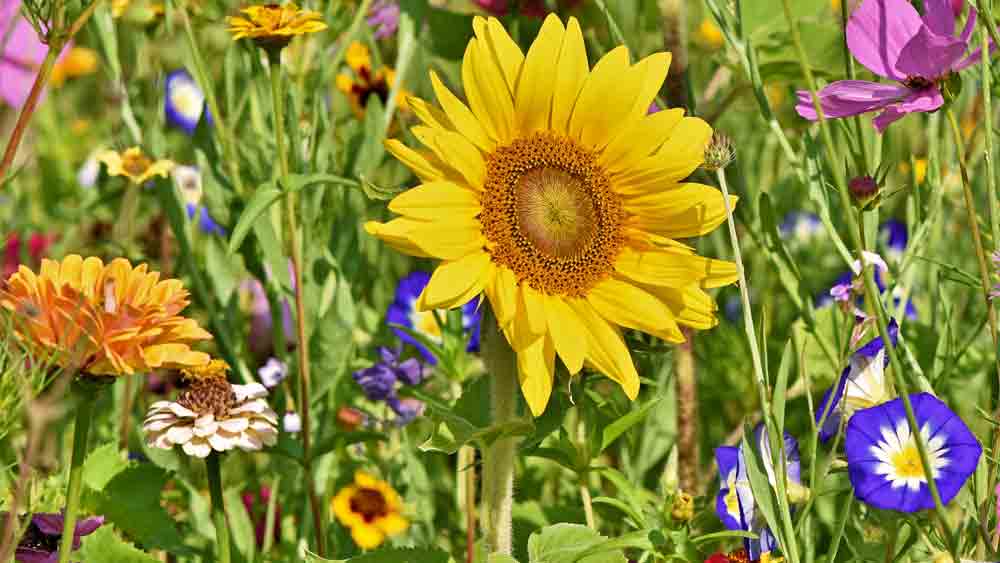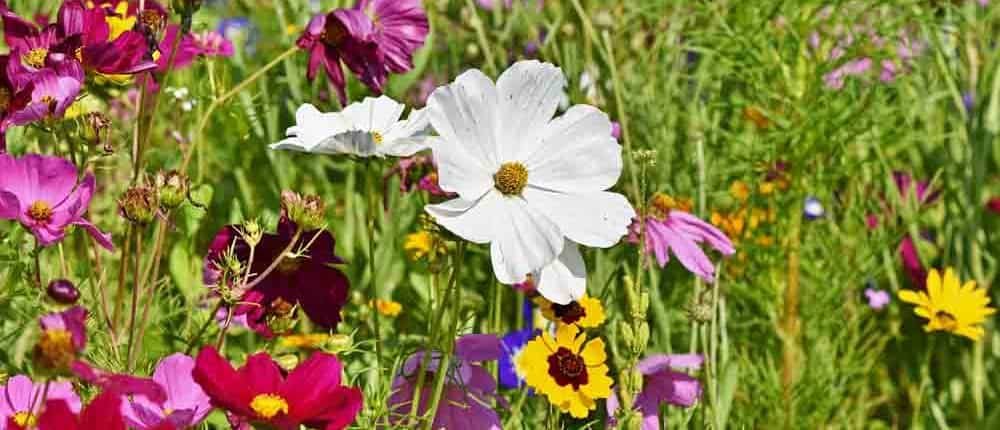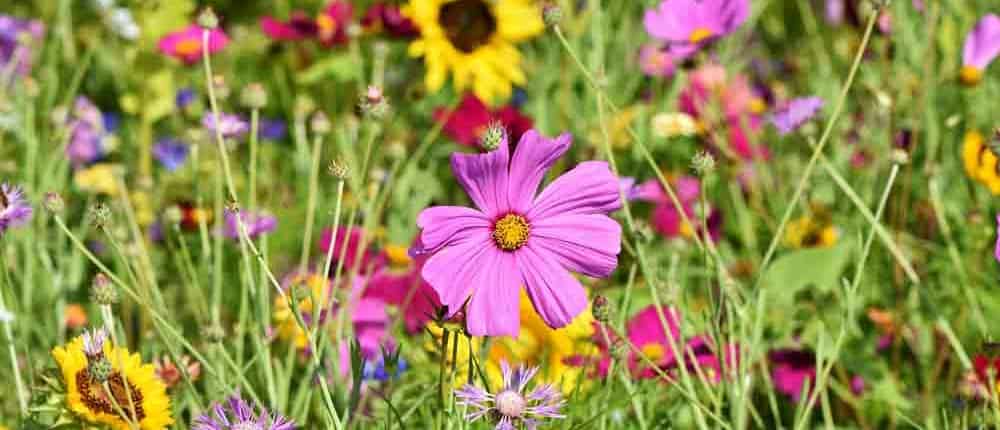Plant Your Spring Flowers in the Fall
Sow Flower Seeds in the Fall?
Embracing the rhythm of fall sowing is a gift to your future self. It frees you from a frantic spring task list and rewards you with the earliest, most spectacular blooms on the block. But the benefits extend far beyond your own garden gate.
Recent studies highlight a critical “hungry gap” in early spring, where a lack of flowers can cause a dramatic decline in the production of new queen bees. Your fall-sown flower seeds, blooming weeks before other plants, provide a life-saving first meal for these vulnerable pollinators. By creating an early-season oasis, you are not just growing flowers; you support the entire ecological web that your vegetable garden depends on.
This isn’t about more work; it’s about a simple shift in perspective. For years, a retail calendar that fills garden centers with plants and seeds in the spring has conditioned gardeners to a familiar race against the clock. The simple, revolutionary act of sowing flower seeds in the fall is the key to unlocking that earlier, more vibrant spring. This simple technique allows you to step outside the retail schedule and partner directly with nature’s own, more effective calendar.
Follow Mother Nature
For the Best Spring Flowers
The apparent magic of a fall-sown flower bed is rooted in simple biology. Many seeds, especially those of hardy wildflowers and perennials, have a natural safety mechanism to prevent them from sprouting too early. They must first go through a period of cold, moist conditions—a process called cold stratification—to break their dormancy.
This isn’t just a waiting period; it’s an active, biochemical reprogramming. The winter cold triggers a crucial hormonal shift inside the seed, decreasing the growth inhibitor (Abscisic Acid) and increasing the growth promoter (Gibberellic Acid). When you sow seeds in the fall, you hand this critical task over to nature, allowing the winter chill to do the work for you. The result is a seed that is perfectly primed and ready to burst into life at the first hint of spring, leading to healthier, more resilient plants.
The Science Behind Fall Sowing
Cold stratification is the process that tells a dormant seed it’s time to wake up and germinate.
By sowing seeds in the fall, you give your future flowers a powerful one-two punch. The winter cold provides the necessary stratification to ensure a strong start, and as the seedling emerges in the cool of early spring, it immediately begins receiving the vernalization it needs to trigger an early and abundant bloom. This synergistic effect is the practical secret behind early spring flowers.
Natural vs. Artificial Methods: Why Your Garden is the Best Laboratory
You may have heard of gardeners stratifying seeds in their refrigerators, but letting nature do this work for you outdoors offers several key advantages.
The natural, in-ground method exposes seeds to the gradual, fluctuating temperatures of your specific local climate. This is critical for many native species and helps them adapt to their environment. More importantly for you, seeds that germinate naturally outdoors grow into plants already perfectly accustomed to your garden’s light and temperatures.
This completely eliminates the need for the time-consuming “hardening-off” period required for seedlings started indoors. You are simply letting the plant grow up in its forever home from day one, resulting in a more resilient and less stressed plant.
Choosing the Right Seeds
For Your Climate
Success with fall sowing begins with choosing the right seeds for your specific winter climate. The goal is to select hardy varieties that benefit from a natural cold stratification period.
For Cold-Winter Gardeners (Zones 2-7)
In regions with hard freezes, you can leverage the deep cold to stratify a wide range of hardy flowers. The consistent cold and snow cover provide the perfect conditions for these seeds.
- Top Choices: You can start with a curated mix like the Beneficial Insects Wildflower Seed Mix, which contains a variety of species designed to thrive with this method. Specific varieties that perform well with fall sowing include Blue Flax, Anise Hyssop, hardy perennials like Hollyhock, and many native wildflowers like the various Milkweeds (Butterfly, Common, etc.), which are essential for monarch butterflies.
- Primary Benefits: These varieties produce robust, early blooms that provide a critical food source for emerging queen bees and other native pollinators.
For Warm-Winter Gardeners (Zones 8-10)
In regions with mild winters and light frosts, the goal is to leverage the cooler, wetter months for germination and root development. For a deeper dive into these strategies, see our Warm Winter Gardener’s Guide.
- Top Choices: Many of the same varieties for cold winters also work well here, as they enjoy the cooler start. Selections like Borage and Blue Flax will establish strong root systems for a spectacular spring bloom. This is also a perfect time to sow a Beneficial Insects Wildflower Seed Mix or native options like the Arizona Milkweed or Antelope Milkweed to support regional pollinators.
Primary Benefits: These varieties establish themselves during the mild winter, leading to a vibrant spring bloom that thrives before the intense heat of summer. They are masters at attracting beneficial insects to your vegetable garden early in the season.
How to Plant:
A Step-by-Step Guide to Direct Sowing
Direct sowing in the fall is a simple and rewarding process that mimics nature’s own cycle. The goal is to get the seeds into place so that the winter cold can work its magic.
The key is to sow your seeds shallowly. Think about how the natural cycle works: the seed heads on a flower dry out, shatter, and release their seeds. They scatter onto the top of the soil and, over time, work their way into the proper position for germination. Your goal is to replicate this.
- Prepare the Bed: Clear your chosen area of any weeds or debris. Use a hard rake to gently rough up the surface of the soil, creating some texture for the seeds to settle into.
- Sow the Seeds: For very fine seeds, it can be helpful to mix them with a small amount of sand. This allows you to see where you have sown and helps with a more uniform broadcast.
- Ensure Good Contact: Gently press the seeds into the soil with your hand or the back of the rake. You are not trying to bury them; you are just ensuring good contact between the seed and the soil. As a rule of thumb, do not cover flower seeds deeper than 1/16 of an inch. Many need light to germinate and should barely be covered at all.
- Protect Your Seeds: If you live in an area with heavy bird pressure, you may need to cover the area with a piece of floating row cover or a very light dusting of straw to prevent predation. Or, you can do as we sometimes do here, and as the Native Americans have done: plant one for the birds, one for God, and one for the farmer!
- Mark Your Spot: Finally, be sure to mark the area where you’ve sown your seeds. A simple stake or garden label will remind you where your future flowers are, preventing you from accidentally weeding them out during the spring cleanup.
Aligning with Nature
Ultimately, sowing your flower seeds in the fall is more than just a clever gardening technique; it’s a fundamental shift in perspective. It’s the rewarding practice of stepping outside the hurried, spring-centric retail schedule and partnering with the patient, powerful rhythms of nature. This simple alignment is the true secret to unlocking an earlier, more vibrant, and more resilient spring garden.






